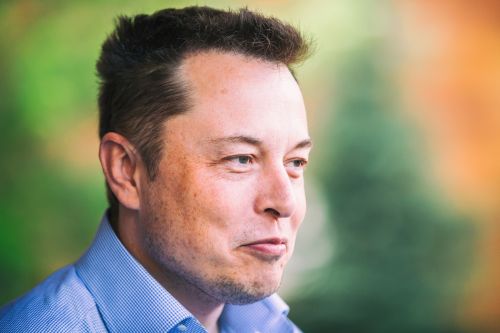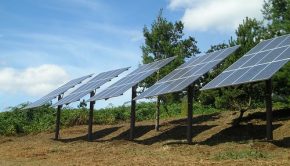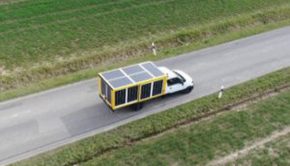4 Questions Going Into Tesla’s Battery Day
4 Questions Going Into Tesla’s Battery Day

Leave it to Elon Musk to turn battery chemistry into a viral phenomenon.
Musk teased a forthcoming “Battery Day” during Tesla’s second quarter earnings call. He noted that “cell production at an affordable price” is the key limitation on Tesla’s growth. But that was about it for details on what the day would actually include. The internet went to work theorizing the big reveal.
Now the show is almost upon us (it goes live Tuesday at 1:30 p.m. Pacific, in theory), and there’s not much more in terms of hard facts to go on. But we at GTM have been following the battery market for years, and are veteran observers of Tesla announcing things.
Sometimes the much-hyped announcements turn out to be overblown. The original Solar Roof launch, for instance, made it look like that product existed back in the fall of 2016. Years later, Tesla hosted a second launch to declare that Solar Roof was really ready for prime-time, at last. History shows that a Tesla announcement does not irrefutably confer a meaningful shift in the market.
But because Musk has built up expectations for battery day, it’s become an event even before it happened. Wall Street analysts are making predictions about what will be revealed. Shareholders are sweating to find out if the news sends the stock even higher. A boring or overly technical reveal could disappoint the market, which is dicey, because meaningful battery science often appears boring and technical to the untrained eye.
Here’s a shortlist of questions to ask going into the event, to separate stardust from strategic gamechangers.
1. Will this significantly change Tesla’s battery costs?
Tesla could toggle a range of inputs — battery chemistry, format, manufacturing process — but ultimately it all comes down to cost. Can Tesla use its engineering might and industrial design experience to meaningfully shave the cost off the batteries that form the crucial cost center of the electric vehicles (and grid storage business)?
Like a cyclist breaking away from the pack in the Tour de France, Tesla is really just racing itself at this point. Its batteries are well out in front of its peers on cost for performance. But it has not yet cracked the long-held goal of producing a truly mass-market, affordable electric car.
On the stationary storage side, Tesla long ago lapped the competition and forced other companies to lower their prices. But, again, batteries are far from mass-consumption for energy storage in the home or on the grid. A breakthrough on battery costs could accelerate the adoption curve for grid storage, too. The lasting impact of Battery Day will be measured against this core metric.
2. Is Tesla’s manufacturing strategy going to shift?
For years, Tesla “batteries” actually contained cells made by Panasonic, packaged in technology designed by Tesla. Recently, the carmaker has worked with LG Chem and CATL, too.
Some of the more intriguing Battery Day speculation centers on whether Tesla will begin manufacturing cells itself.
One does not simply become a top-tier battery manufacturer overnight. It’s a game of scale, so newcomers would have to invest billions of dollars to catch up with incumbents’ manufacturing capacity. They’d also need in-house chemistry and battery engineering expertise to differentiate themselves.
But Tesla has already invested billions in its Gigafactories — and has years of experience working with different battery chemistries and pushing them to maximum performance. It wouldn’t have to start from scratch.
Partnering with established manufacturers made sense when Tesla still had to figure out how to mass-produce electric vehicles and prove that people would actually buy them. Those factors are no longer in doubt. If the margins Tesla pays to buy cells from its partners stand in the way of further cost reductions, now may be the time to take it in-house.
But Tesla doesn’t plan to cut those suppliers out of the deal, Musk posted on Twitter Monday afternoon.
“We intend to increase, not reduce battery cell purchases from Panasonic, LG & CATL (possibly other partners too),” he wrote. “However, even with our cell suppliers going at maximum speed, we still foresee significant shortages in 2022 & beyond unless we also take action ourselves.”
As other automakers ramp up their volumes of electric vehicle production, the self-determination that comes from scaling your own cell supply in-house will become increasingly valuable.
3. How soon will the change happen?
Changes in the back-end supply chain can take a while to ripple out to customer wallets. A key question for Battery Day is, when will it affect the prices of vehicles and battery storage?
Tesla has shown a willingness to unilaterally change its prices seemingly out of the blue. It dropped vehicle prices by a few thousand dollars earlier this year. In years past, it quietly raised the price of the Powerwall, despite the general logic that batteries should get cheaper over time.
The immediacy of any price changes will determine whether this event stays buzzy beyond the Tesla-obsessed. A sudden discount makes it a bigger story for consumers as a whole.
But Musk tamped down on expectations for an immediate payoff on Twitter Monday.
“This affects long-term production, especially Semi, Cybertruck & Roadster, but what we announce will not reach serious high-volume production until 2022,” he said.
That seems to negate the chance that Battery Day changes things for most consumers in the near-term.
4. Will there be surprises?
The recent tweets suggest Tesla will step into cell manufacturing, but that it won’t take effect for a few years. That alone is unlikely to validate the expectations that fans and analysts have placed on Battery Day. To meet the moment, Musk may throw in some goodies to give folks something to chatter about beyond the procedural updates on battery supply chains.
This could be a new vehicle unveiling, souped up charging speeds, or something else entirely. The challenge is, can even Musk make batteries compelling enough to justify all the excitement? Or will there need to be some flashy, not-especially-battery-centric reveals to keep things exciting?








